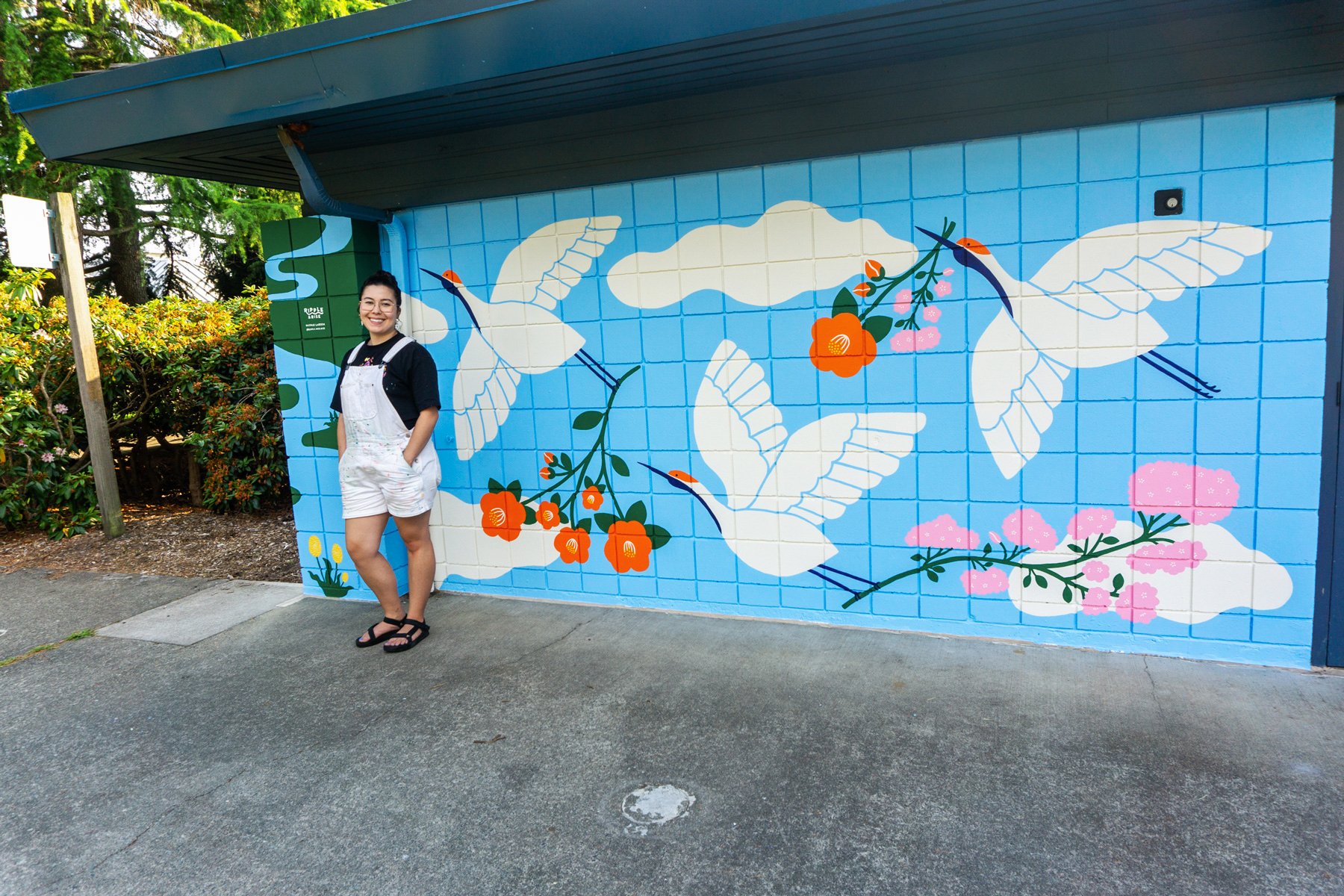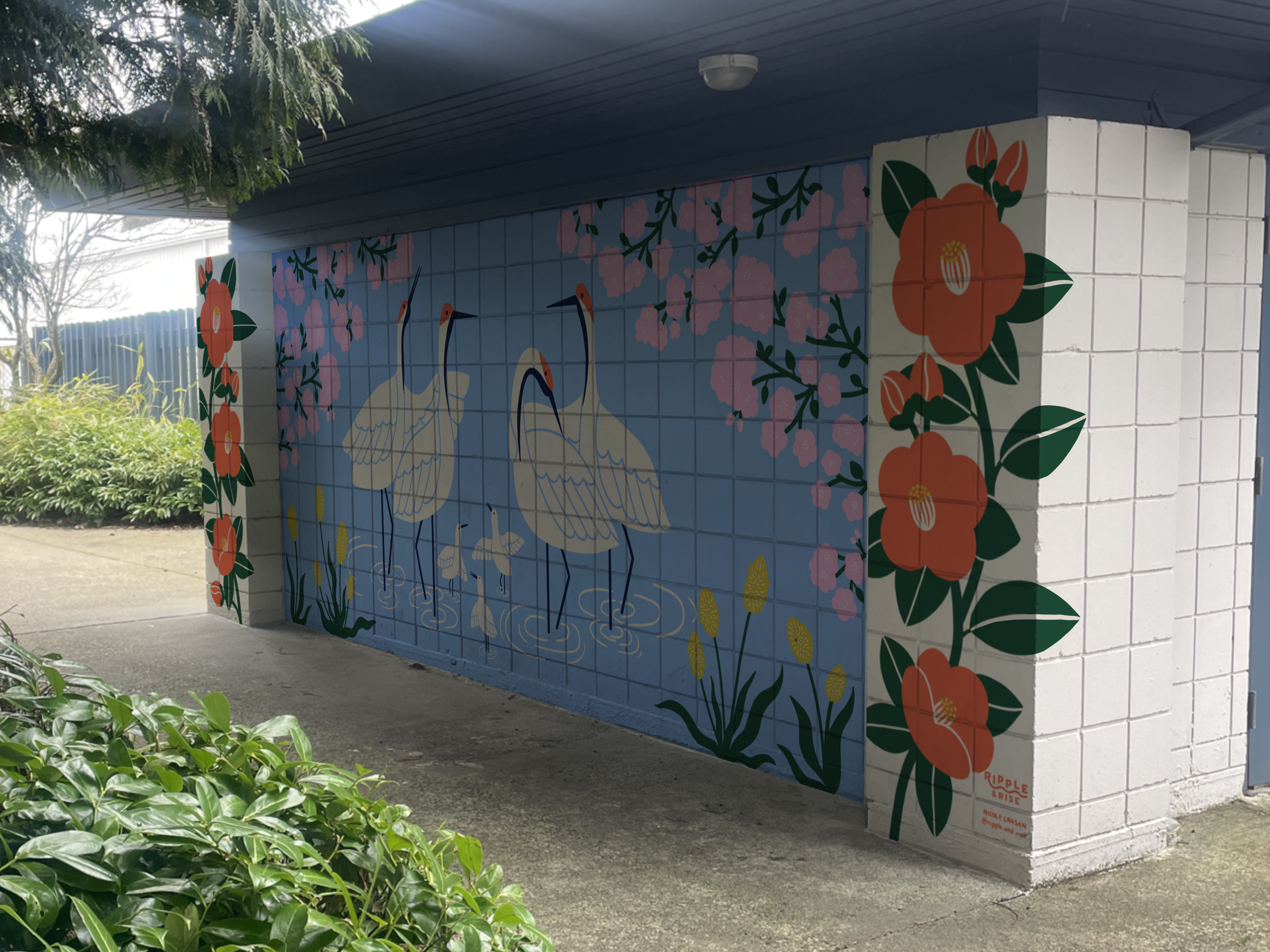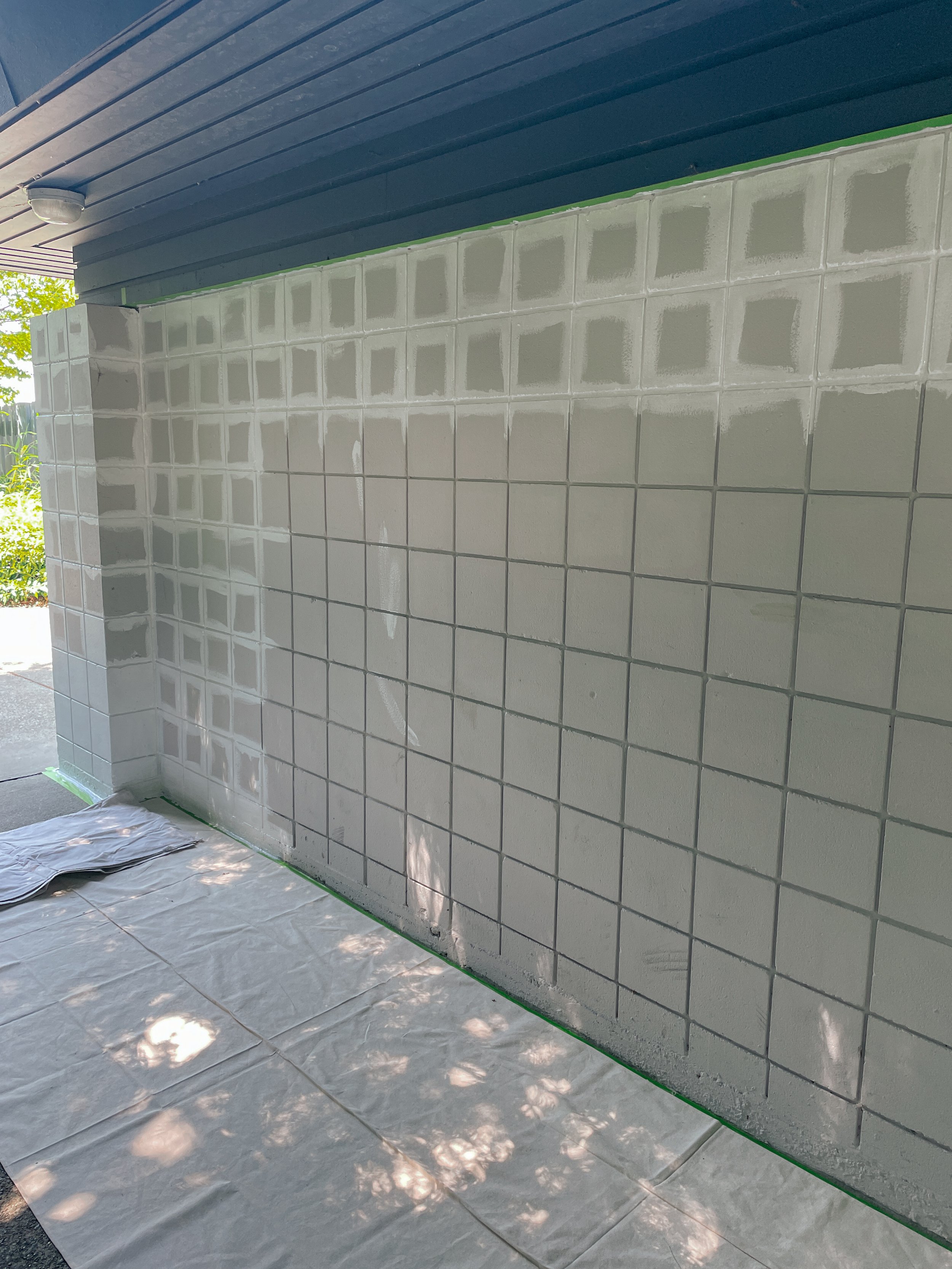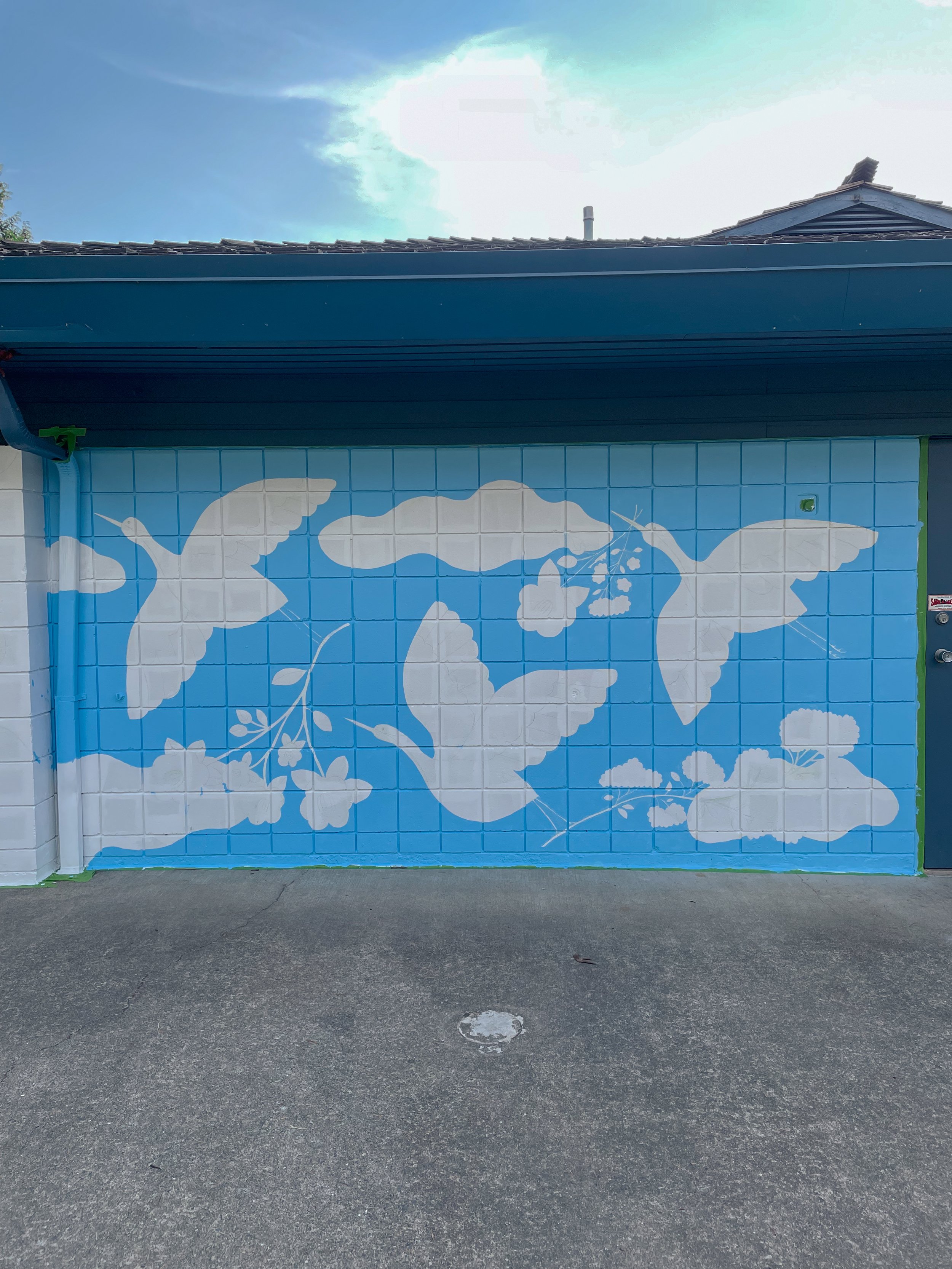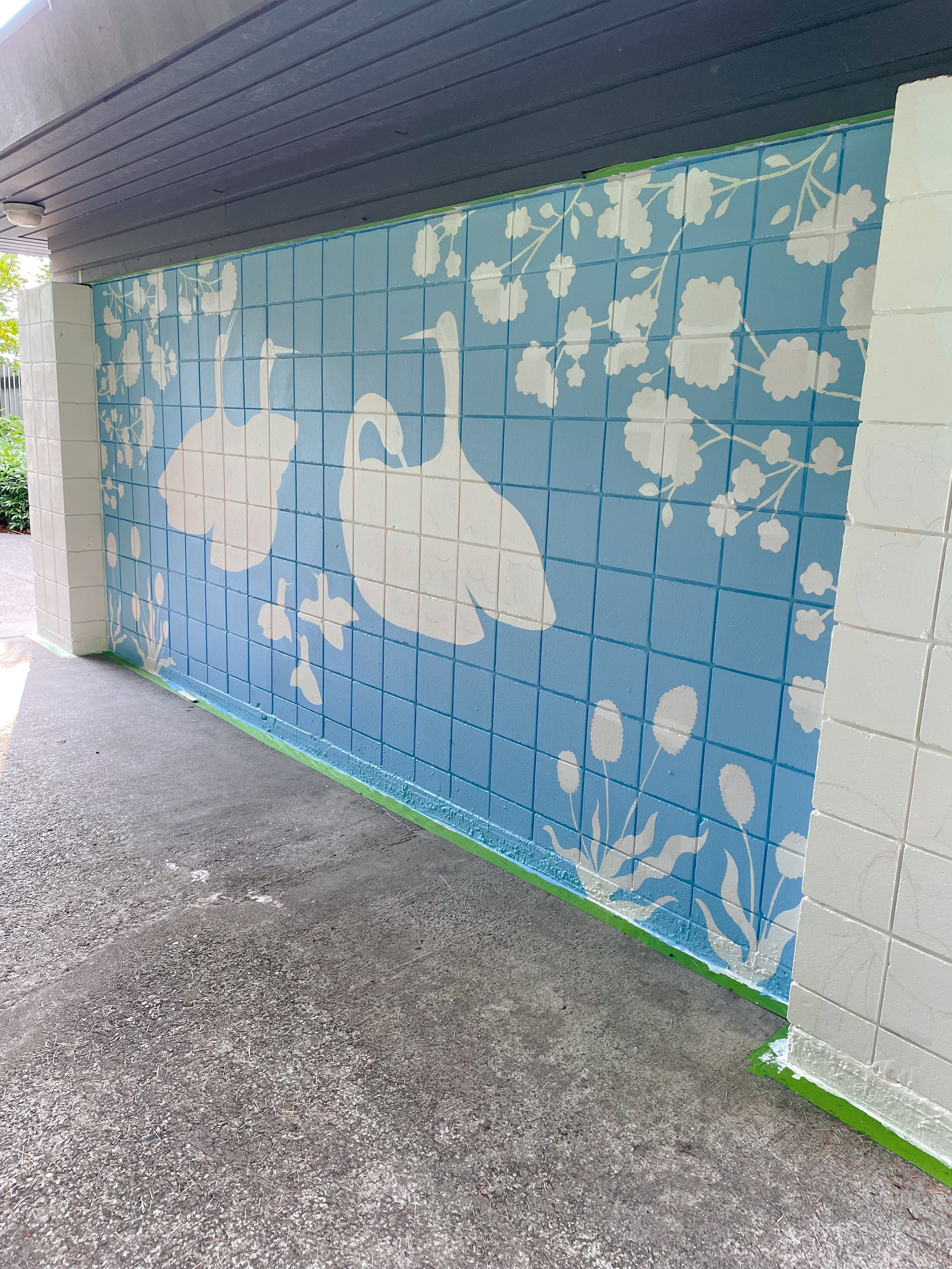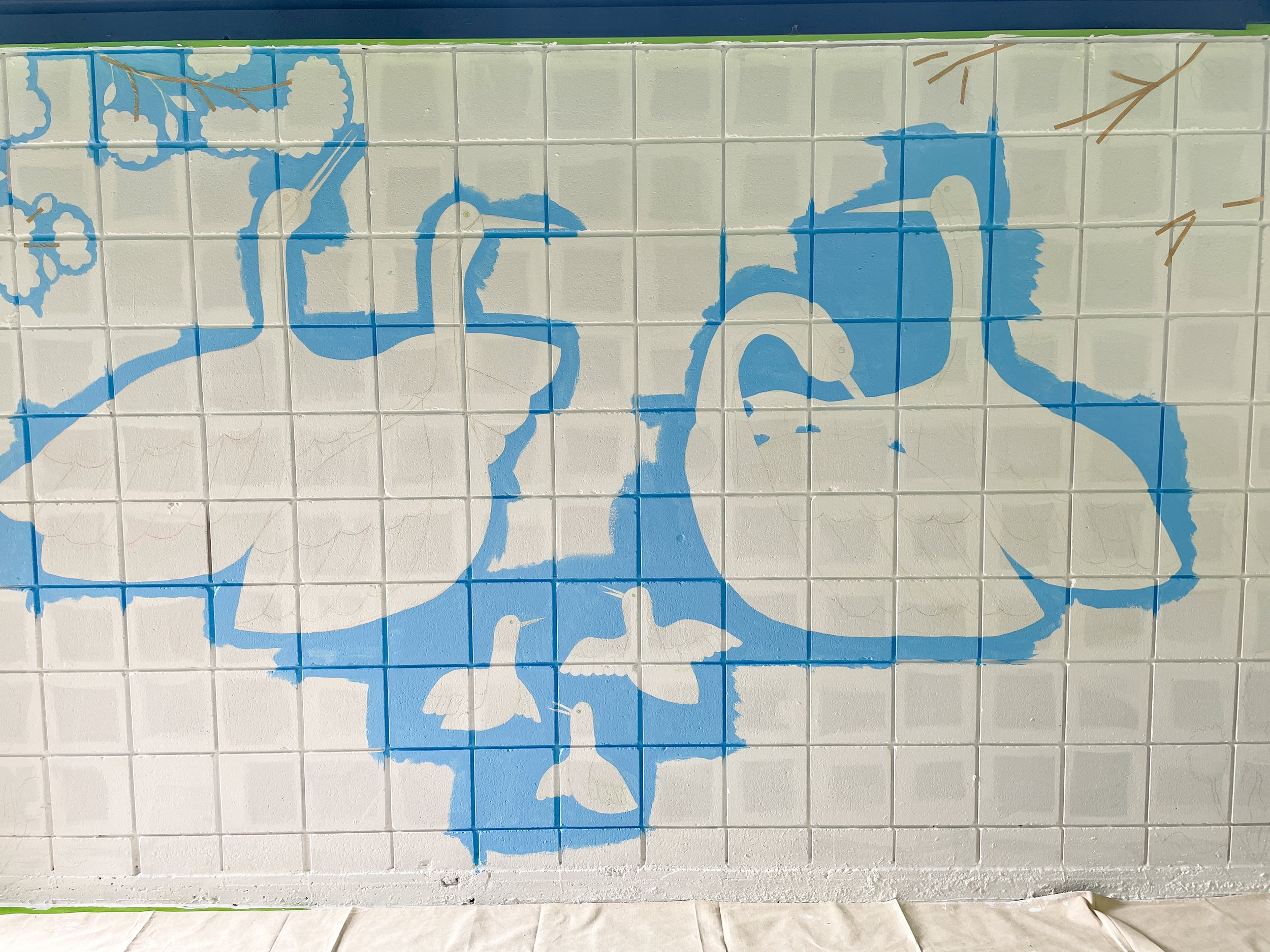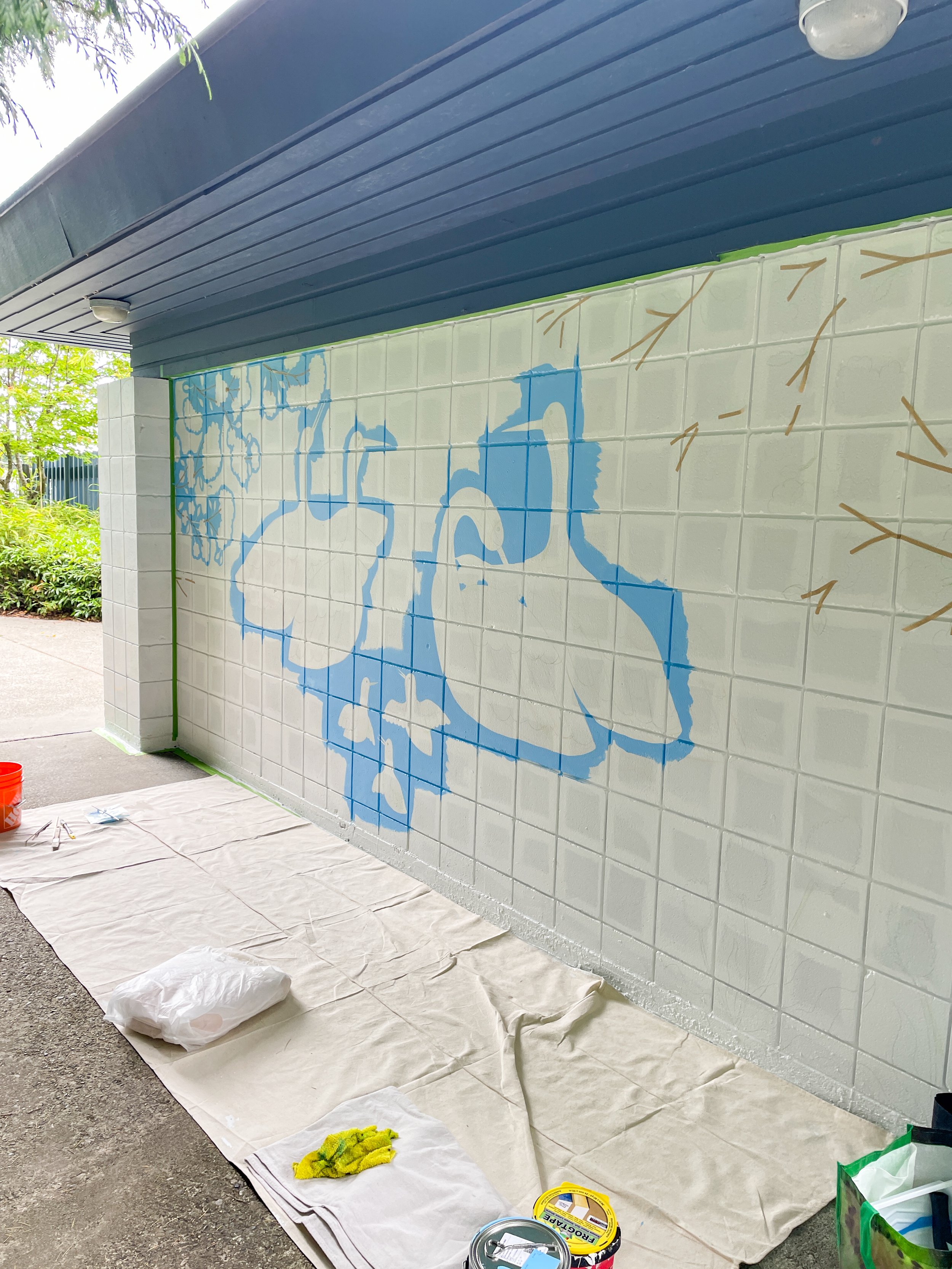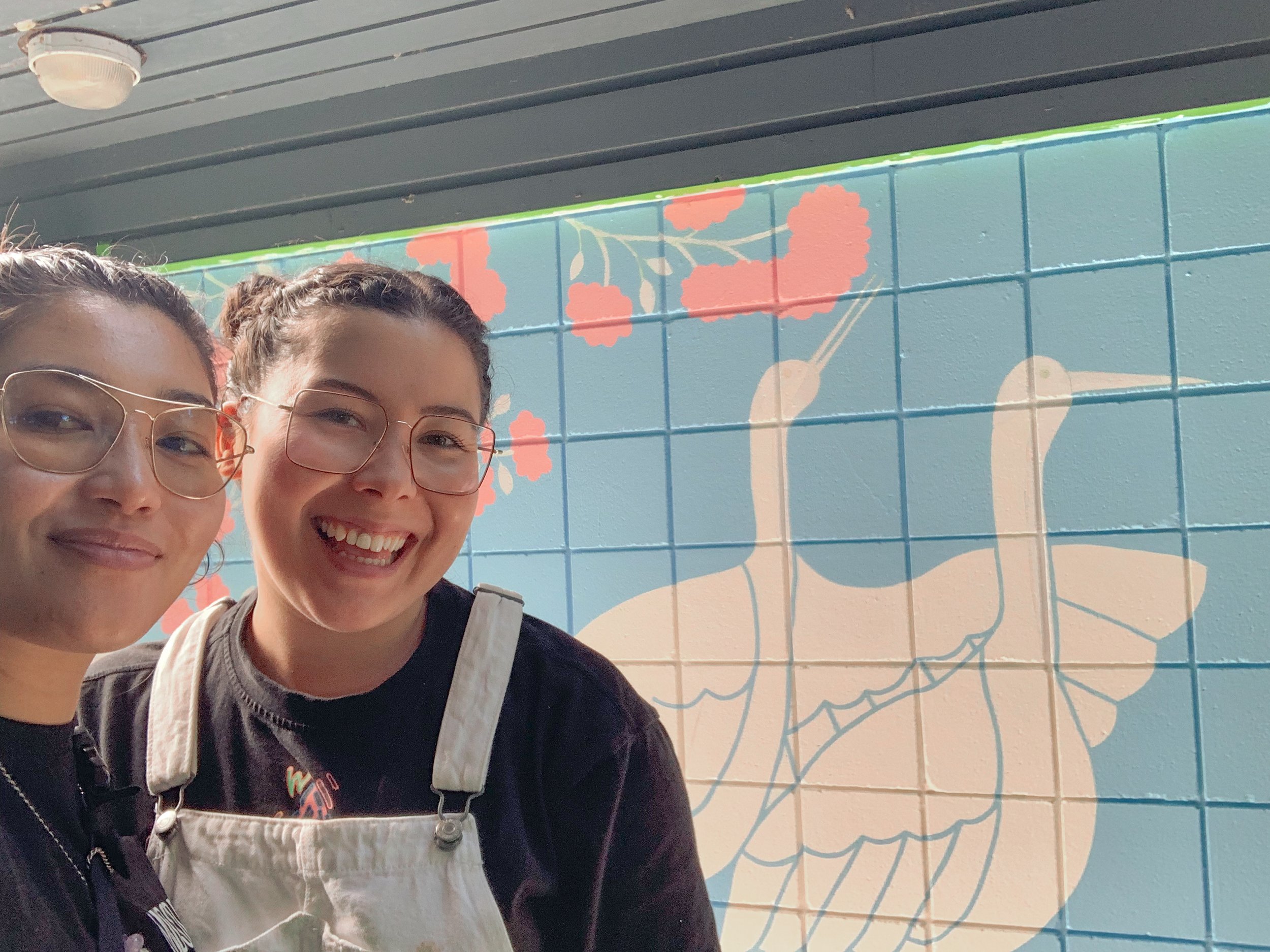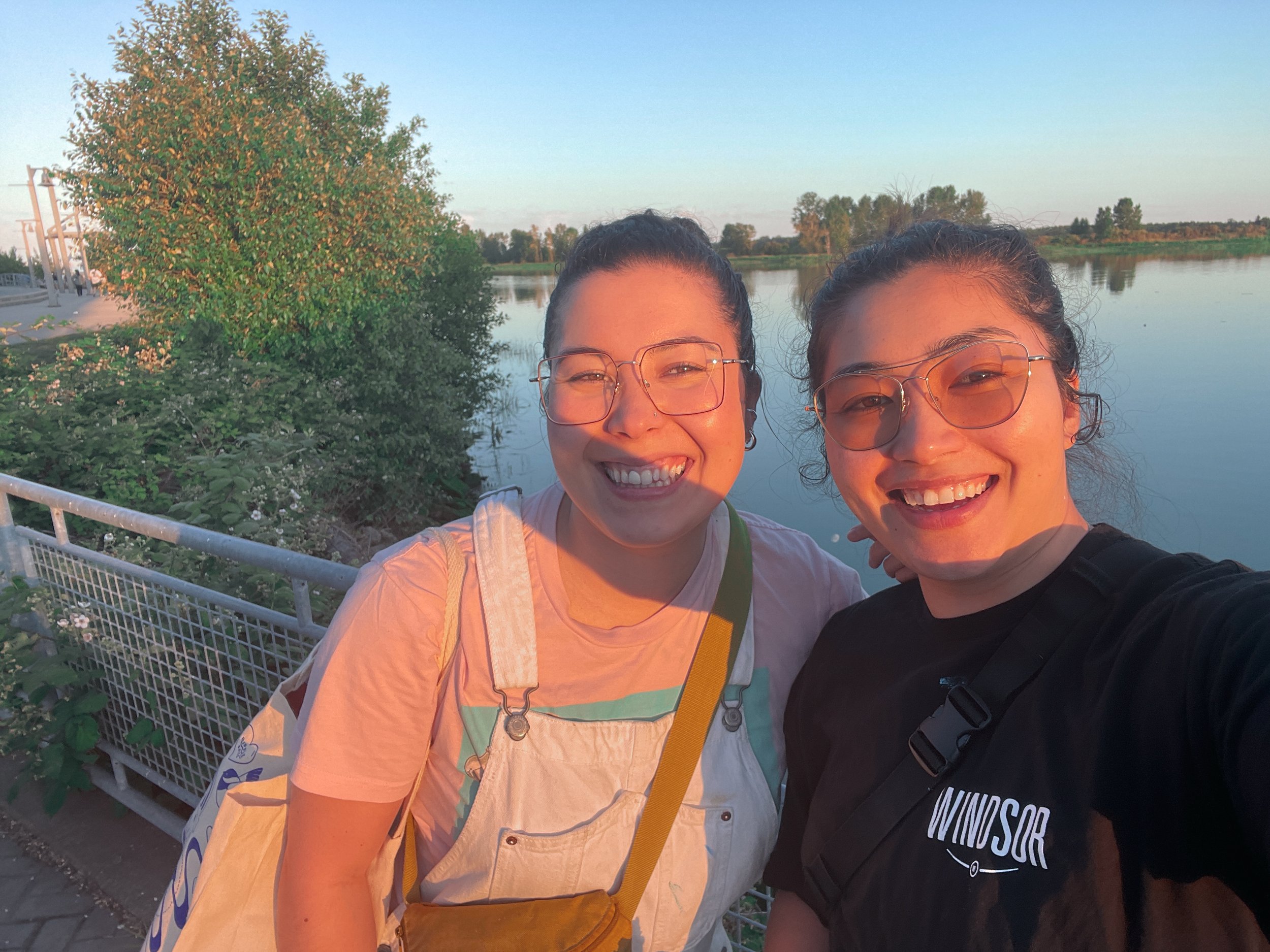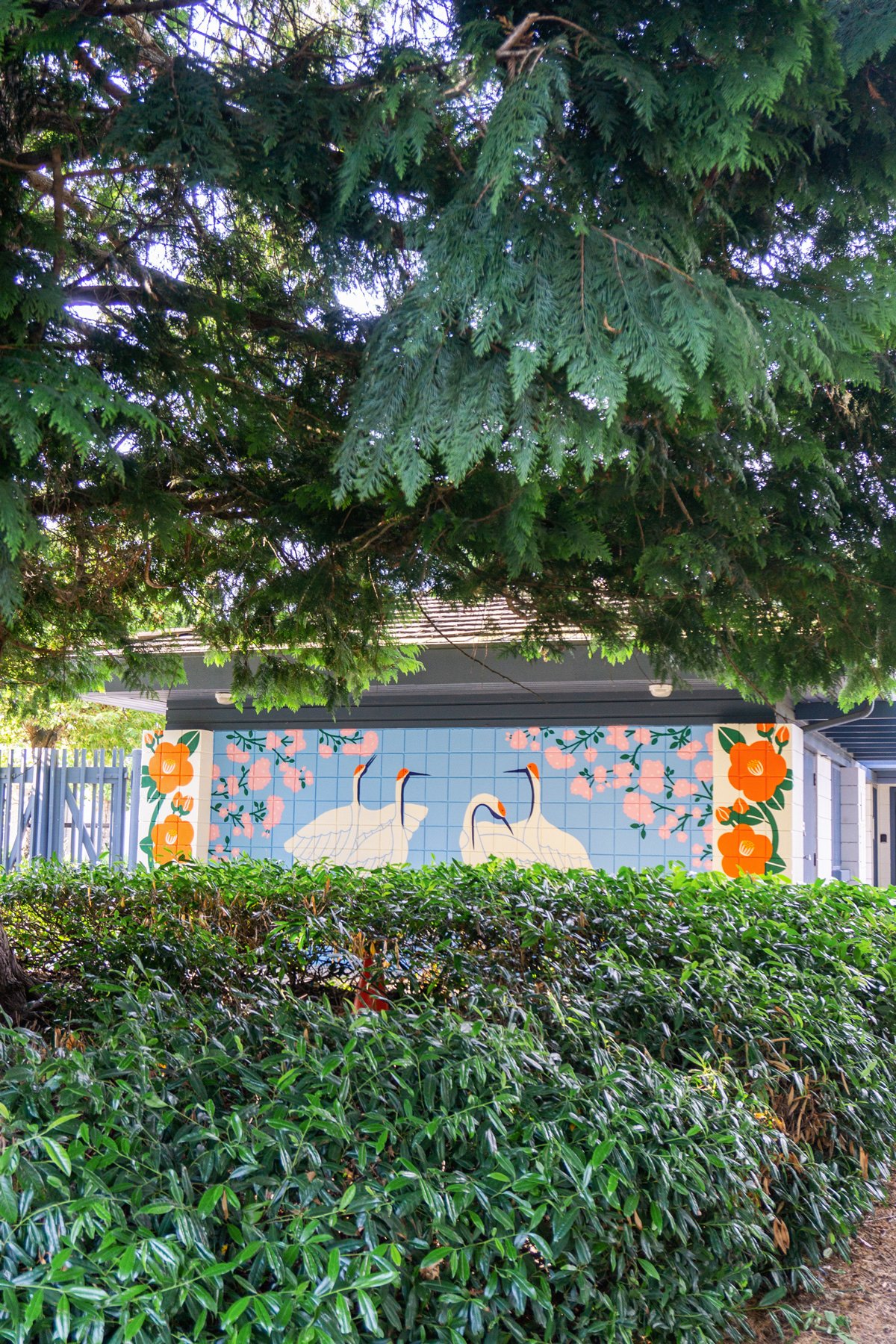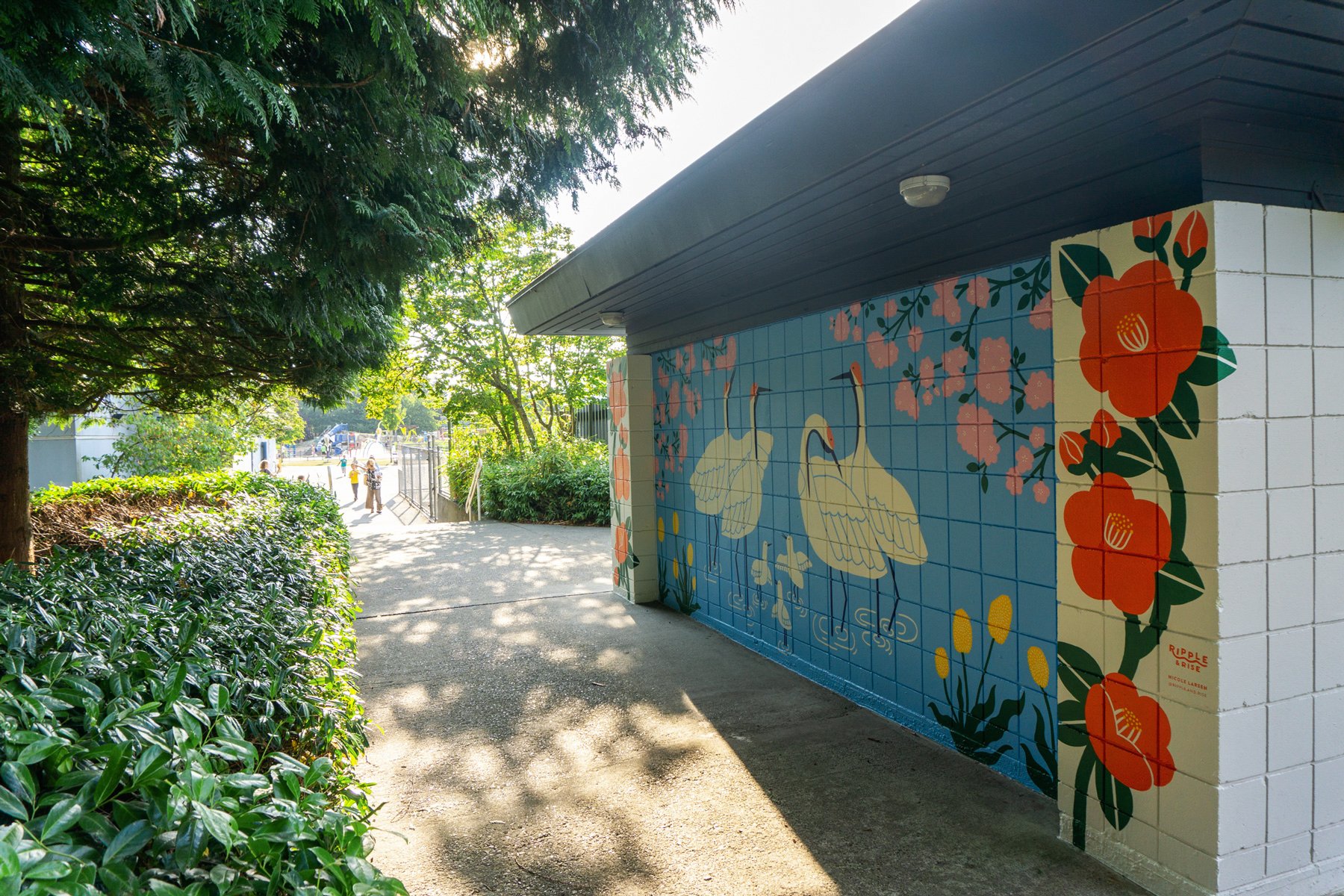Journey Home | A peak through the design inspiration & process
To start off, this is my first ever blog post! Thank you for being here, supporting me, and being curious! 😊✨
Last week I wrapped up my most meaningful mural project to date, and there was simply too much that I wanted to share about the process, story and personal connection to fit into an instagram post…so here we go!
This mural project was meaningful to me in so many ways! It allowed me the opportunity to not only celebrate my own Japanese culture, but also honour my family, my ancestors and the Japanese Canadian community in BC.
As some of you may know, I am half Japanese and a 4th generation Japanese Canadian. My Japanese culture is something I’ve always been very proud of, and I am so grateful for the traditions, values and stories that have been passed down to me. Both of my grandparents have greatly influenced my life, and embody the values and traits that inspired my designs: courage, strength, perseverance, resilience and hope.
Sadly my Jichan passed away in 2014, and I didn't learn very much about his past until my early 20s. I am so incredibly grateful for the 3+ years I lived with my grandma, and for all of the moments and stories we shared together. I’ve always looked up to my grandparents, but I grew to appreciate them so much more after learning about their struggles and journeys through adversity. Seeing them as their creative, courageous, determined and loving selves, despite what they had been through, is truly something to be admired.
Japanese Canadian history
It’s impossible to capture the entirety and depth of what Japanese Canadians went through, but I wanted to give a little insight into their history and the events that shaped the people they are today.
Long before World War II, Japanese Canadian people suffered racism and discrimination. In early 1942, after the bombing of Pearl Harbor in World War II, over 90% of Japanese Canadians in British Columbia were dispossessed and forced to leave their homes and all of their belongings, bringing only what could fit into a small suitcase. Their homes, businesses, and all remaining possessions were confiscated by the government and sold to pay for their forced internment.
Confiscated Japanese fishing boats tied up at Annacis Island in Delta.
My Jichan and his classmates at Steveston Elementary, 1939
My Jichan, Yukio Nasu and his father, Bunkichi Nasu, in Steveston, BC
More than 8,000 Japanese Canadians were detained and processed through Hastings Park, forced to live in livestock buildings until they were sent to places in the interior of BC, at least 160km from the coast. Many of the areas were abandoned mining towns in poor condition, often ill-equipped to support large populations. Japanese Canadians were left to fend for themselves and establish self-sustaining communities with limited resources. The Canadian government did not provide adequate support to the interned Japanese Canadians, as no financial assistance, clothing, or access to education beyond the elementary level was provided.
My Grandma with her grad class in Minto, BC, 1945. In order to attend high school in Vernon, my grandma left Minto to work for a family in exchange for room and board (taking care of their home and two kids) at age 13.
During their internment, Japanese Canadians supported one-another, looked after each other and made the best out of their horrible situation. They created their own schools, trained their own teachers, sewed their own clothing and grew their own food to supplement the scarce and poor-quality food the government provided. They did whatever they could do to be resourceful and live the most normal lives possible, and persevered through it all as a community.
My Grandma Hiroko Yoneda in Minto, BC
Bunkichi Nasu fishing in Rivers Inlet on a rental boat, 1964
The dispossession faced by my grandparents and countless other Japanese Canadians had a profound and lasting impact on their lives. After the war ended in 1945, they, like many others, were left to rebuild their lives from scratch.
My Jichan and his family, originally from Steveston, began a new life in Vancouver, BC after the war. Similarly, my grandma and her siblings, originally from Courtney, BC, relocated to Vancouver. Tragically, she had lost her father during their internment at Hastings Park, and her mother passed away shortly after the war ended.
Despite the immense hardship they endured, my grandparents chose to forge ahead, refusing to let their past define them. In a country that had once rejected and imprisoned them, they held their heads high and worked tirelessly to create a life filled with love, family, security, and a sense of community.
The history of Japanese Canadians is rich and nuanced, and my grandparents' stories are just a small part of it. If you're interested in delving deeper into their experiences and the legacy of their community, I encourage you to visit the links provided at the end of this post. Together, let's honor their resilience and share their stories with the world. 💞
Steveston Outdoor Pool Murals | Design Inspiration & Process
If you have read this far, thank you! It means a lot to me that you’re curious about the inspiration and process behind it all! Now let’s dive deeper into the inspiration 😊
Community engagement
To kick off this project, I had the privilege of meeting with several community groups in Steveston to gain insight into what truly makes their neighborhood special. Through these conversations, I discovered the messages, emotions, and sentiments that the community believes are crucial to incorporate into the mural's design.
First and foremost, the community recognized the outdoor pool as a space that brings people of all ages together to connect, bond and share joyful experiences. Parents often find themselves immersed in conversations with fellow parents as they watch their children playing in the pool.
The community also expressed a strong desire to acknowledge the significant contributions of Japanese Canadians to Steveston's growth and development. They recognized the indispensable role that Japanese Canadians have played in shaping the community's identity and wished to commemorate their presence and cultural heritage.
Lastly, the mural’s location holds a great deal of significance. Situated right next to the Japanese Cultural Centre, it serves as a poignant reminder of Steveston’s historical ties with the Japanese community. It’s proximity to the Fraser River, which has served as a lifeline for the area's economic prosperity, development, and diverse ecology, is also very important when considering the mural design.
Symbolism
In my journey to create murals that resonate with everyone and maintain a positive and uplifting energy, I have intentionally incorporated various symbols to represent the rich history of Japanese Canadians.
One prominent symbol in Japanese culture is the red-crowned crane, believed to represent the souls of ancestors when flying back home. In the first mural, the cranes flying towards the Fraser River signifies the souls of those who have passed away, while also symbolizing Japanese Canadians returning to Steveston after their internment during World War II.
Another symbol I have used is the red camellia, which holds deep cultural significance in Japan. Due to its incredible ability to survive and thrive in very harsh conditions, it has become the embodiment of courage, resilience and strength. Cherry blossoms (Sakura) are Japan’s national flower, which signify hope and renewal. They can also be found all over Steveston! The cranes carrying these flowers symbolize the values and qualities that Japanese Canadians carried with them during their hardships, while flying together in a group to represent their strong sense of community and mutual support.
The second mural design depicts the cranes standing tall in the waters of the Fraser River, alongside their family and offspring. Surrounding them is a lush display of flowers, all grown from the flowers they brought back on their journey home. This powerful symbol not only represents the enduring bonds of community and family but also highlights how the courage, resilience, strength, and hope of Japanese Canadians have been inherited and carried forward by future generations. The abundance of flowers also reinforces the idea of flourishing relationships, personal growth, and the blossoming of a vibrant community.
mockups
After receiving the final approval for the mural designs, I used the digital illustrations to mock up how the designs would translate on the walls. After the priming stage was complete, I was then able to free-hand sketch out the design by using the grid pattern on the wall as a guide.
Painting
I quickly realized once starting to paint that it was by far the most challenging surface I have ever worked with! Because of this I really wanted to cut down on how much surface area I had to paint, so I opted to paint the background first, working around all of the shapes (which I have never done before!). In the end I am really happy I chose to approach it this way, as it definitely took fewer coats to paint the details.
Community
My sister Michelle helped out on my third day painting and finished the second coat of the background for me :) My friend Jaylee and parter Jason helped for a couple days as well and they were so helpful! It was really nice to have some company and take breaks to enjoy the beautiful views and delicious food Steveston has to offer!
As always, painting the details was the most challenging part and definitely took me a lot longer than expected. This project definitely tested my patience as well as my physical and mental stamina, especially since I had only just began feeling ok again after having surgery at the end of March. Being a part of such a supportive community and having a loving partner to come home to brought me a lot of comfort during the difficult times, and helped me take things one day at a time 🥰
It was such a wonderful experience painting in Steveston and being able to explore an area I haven’t spent much time in before. I had so many nice chats with locals of all ages while painting, and received a lot of great feedback from the community! Many people came by to tell me that the murals brought a smile to their face and brightened up their day, and kids would often stop to say hi and share compliments as they were running by with their friends. The highlight for me were the few times that large groups of young kids came by with their teachers. They were so sweet and very curious about what I was doing, and were also extremely intrigued that an adult was making art for a living 😂 It was such a wonderful opportunity to show kids in the community that you CAN choose to follow your dreams and do what you are passionate about.
All Done Painting!
It felt so amazing to wrap up this project, and I am happy that I took the extra day to work on the touchups and final details instead of rushing to finish. I of course celebrated with a delicious dinner at Ichiro Japanese restaurant after completing the mural! 😋
It’s always such an incredible feeling seeing your artwork at such a large scale, and this time around it was even more satisfying! I definitely had some doubts early on if I was going to be able to make the murals look like my final illustrations since the surface was so challenging to work with, but it all worked out in the end! It just took a lot more time and patience than I was prepared for 😅
The final results
The day after completing the murals my Aunt drove my Grandma to see them in person. It was so special to see her next to the murals, head held high with a smile on her face.
Creating meaningful public art for the Steveston Community, with a focus on honoring my own family and the Japanese Canadian experience, has been an incredibly profound and unforgettable journey. The opportunity to contribute to the community in this way has filled me with so much gratitude.
My hope is that individuals who encounter these murals, along with the accompanying plaques, will be moved by a deep sense of admiration and appreciation for the Japanese Canadian community. It is my intention that these artworks serve as a powerful reminder of the significance of caring for our communities and supporting one another during times of adversity.
Thank you so much again for being here! I really appreciate your support and curiosity about this project! Follow my instagram @ripple.and.rise for a more in-depth look at the mural painting process, as well as updates on projects, events and daily life as a freelance designer! 😊✨

